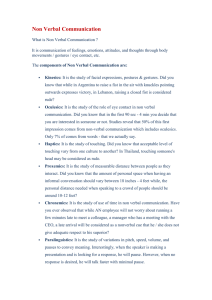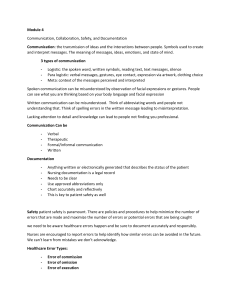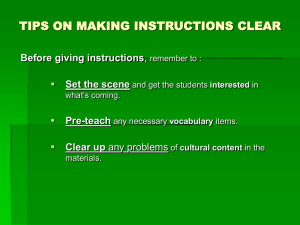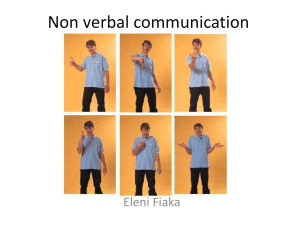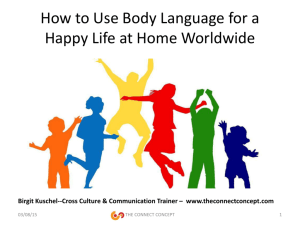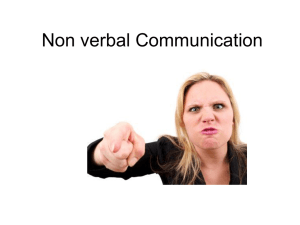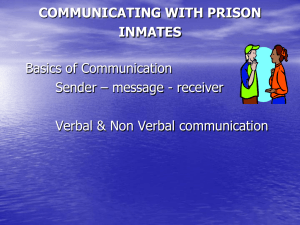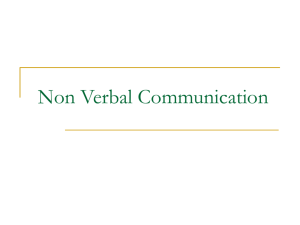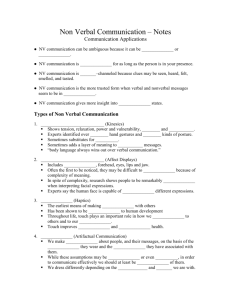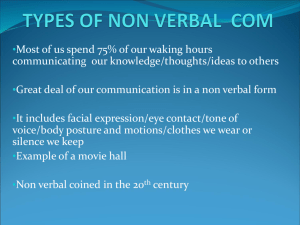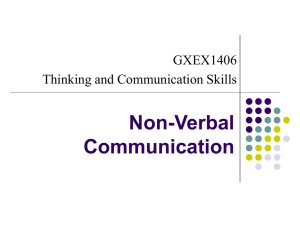Categories/Types of Non Verbal Communication
advertisement
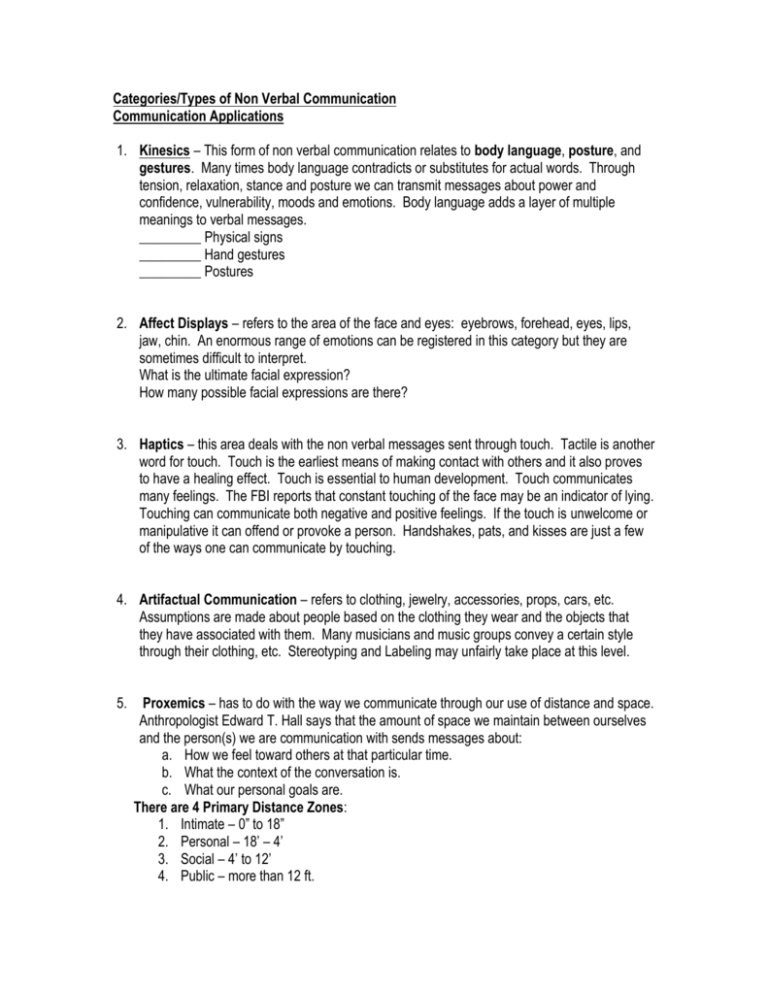
Categories/Types of Non Verbal Communication Communication Applications 1. Kinesics – This form of non verbal communication relates to body language, posture, and gestures. Many times body language contradicts or substitutes for actual words. Through tension, relaxation, stance and posture we can transmit messages about power and confidence, vulnerability, moods and emotions. Body language adds a layer of multiple meanings to verbal messages. _________ Physical signs _________ Hand gestures _________ Postures 2. Affect Displays – refers to the area of the face and eyes: eyebrows, forehead, eyes, lips, jaw, chin. An enormous range of emotions can be registered in this category but they are sometimes difficult to interpret. What is the ultimate facial expression? How many possible facial expressions are there? 3. Haptics – this area deals with the non verbal messages sent through touch. Tactile is another word for touch. Touch is the earliest means of making contact with others and it also proves to have a healing effect. Touch is essential to human development. Touch communicates many feelings. The FBI reports that constant touching of the face may be an indicator of lying. Touching can communicate both negative and positive feelings. If the touch is unwelcome or manipulative it can offend or provoke a person. Handshakes, pats, and kisses are just a few of the ways one can communicate by touching. 4. Artifactual Communication – refers to clothing, jewelry, accessories, props, cars, etc. Assumptions are made about people based on the clothing they wear and the objects that they have associated with them. Many musicians and music groups convey a certain style through their clothing, etc. Stereotyping and Labeling may unfairly take place at this level. 5. Proxemics – has to do with the way we communicate through our use of distance and space. Anthropologist Edward T. Hall says that the amount of space we maintain between ourselves and the person(s) we are communication with sends messages about: a. How we feel toward others at that particular time. b. What the context of the conversation is. c. What our personal goals are. There are 4 Primary Distance Zones: 1. Intimate – 0” to 18” 2. Personal – 18’ – 4’ 3. Social – 4’ to 12’ 4. Public – more than 12 ft. 6. Chronemics – The way we use and structure time can send intentional and unintentional messages about what we value and whom we consider important. For example: being late for an appointment; showing up too early for a party; walking or talking fast; driving fast or slow; pausing when answering questions, speeding up in the hall when the warning bell rings, etc. How do you use your time? Are you a procrastinator? Do you meet deadlines? Do you observe speedlimits How is your rate of speech? FYI : According to research, Switzerland is considered the speediest country. Ireland was 2nd, Germany 3rd, Japan 4th, and Italy 5th. The U.S. came in at 16th. The colder the country the faster it was. Hotter = more laid back!! The fastest cities were 1. Boston 2. Buffalo NY 3. New York City And Dallas came in 26th.
